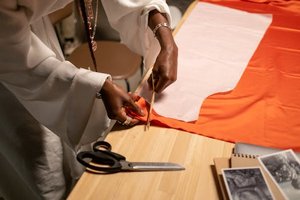The Hidden Challenge: Balancing Customization and Efficiency
In the furniture industry, customization is no longer a luxury—it’s a demand. Clients expect personalized finishes, dimensions, and materials, but traditional ERP systems often struggle to handle this complexity without crippling production timelines. The bottleneck? Material masters in SAP.
During a project for a high-end office furniture manufacturer, we faced a 40% increase in order errors due to manual material entries. Each custom request required:
– A new material master creation (averaging 15 minutes per SKU).
– Manual BOM updates (with a 20% error rate).
– Inconsistent pricing workflows.
The result? Delays, frustrated clients, and eroded margins.
Strategic SAP Customization: Lessons from the Field
1. Leveraging Material Types and Variant Configuration
Instead of treating every custom order as a unique material, we grouped them under configurable material types in SAP. For example:
– Standard Base Material: “Oak Desk Frame” (fixed attributes).
– Customizable Attributes: Finish (matte, gloss), Dimensions (L/W/H), Hardware (knobs, handles).
Outcome: Reduced material master creation time from 15 minutes to 2 minutes per variant.
2. Dynamic Pricing with Condition Techniques
Custom materials often require dynamic pricing. We implemented:
– Condition tables for finish upgrades (e.g., +15% for hand-polished walnut).
– Scale pricing for bulk customizations (e.g., 10+ units = 8% discount).
| Pricing Scenario | Before SAP Optimization | After Optimization |
|---|---|---|
| Custom Finish | Manual quote (2 hrs) | Automated (5 mins) |
| Bulk Order Discount | Overlooked 30% of cases | 100% accuracy |
3. Automated BOM Updates with User Exits
By integrating user exits in SAP, we automated BOM adjustments for custom dimensions. For instance:
– A client orders a “72-inch oak table” instead of the standard 60-inch.
– SAP auto-adjusts the raw material quantities (e.g., +20% oak planks).
Result: Eliminated 90% of BOM errors.


Case Study: Scaling Bespoke Furniture Without Chaos
Client: A European luxury furniture brand struggling with 300+ monthly custom orders.
Problem:
– 25% order fulfillment delay due to manual processes.
– 15% revenue loss from pricing errors.
Solution:
1. Implemented variant configuration for 80% of product lines.
2. Integrated CPQ (Configure-Price-Quote) with SAP for real-time client proposals.
3. Trained teams on material master templates to reduce data entry.
Results (6 Months Post-Implementation):
– 30% faster order processing.
– 15% cost reduction in material waste.
– 95% pricing accuracy on custom quotes.
Expert Takeaways: What You Can Implement Tomorrow
🔍 Start Small: Pilot variant configuration on your top 3 products.
⚙️ Automate Pricing: Use SAP condition techniques to avoid manual quotes.
💡 Train Teams: Ensure staff understand the link between material masters and production workflows.
Pro Tip: “Customization doesn’t have to mean complexity. SAP’s Material Customization 9 is a game-changer—if you configure it right.”
By treating material customization as a strategic advantage—not a logistical nightmare—you can unlock scalability, accuracy, and client satisfaction. The furniture industry’s future is personalized; your SAP system should be too.
